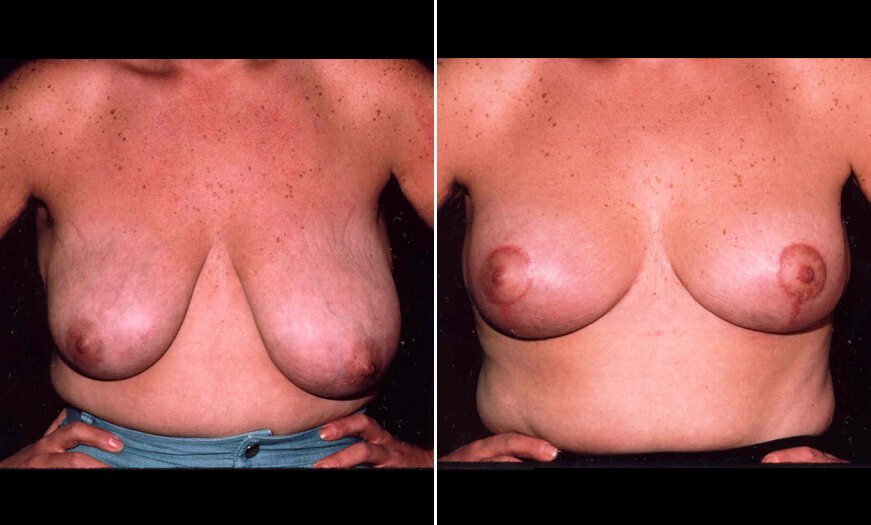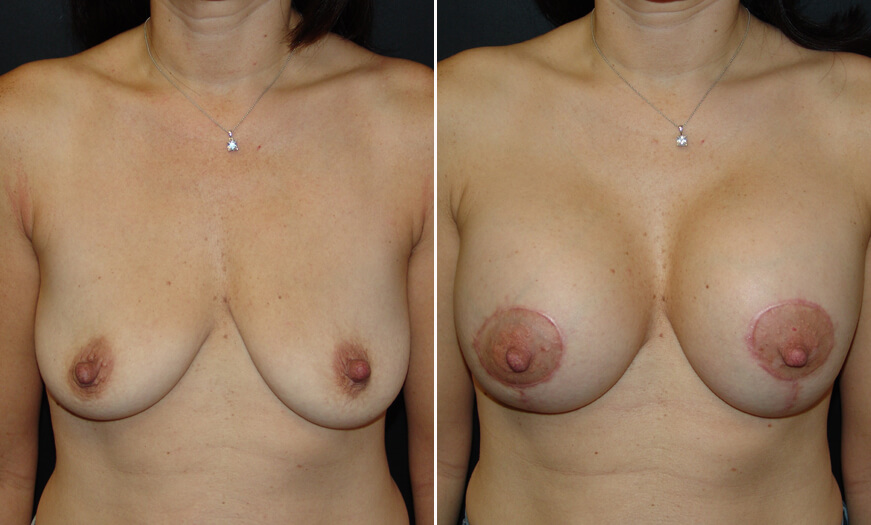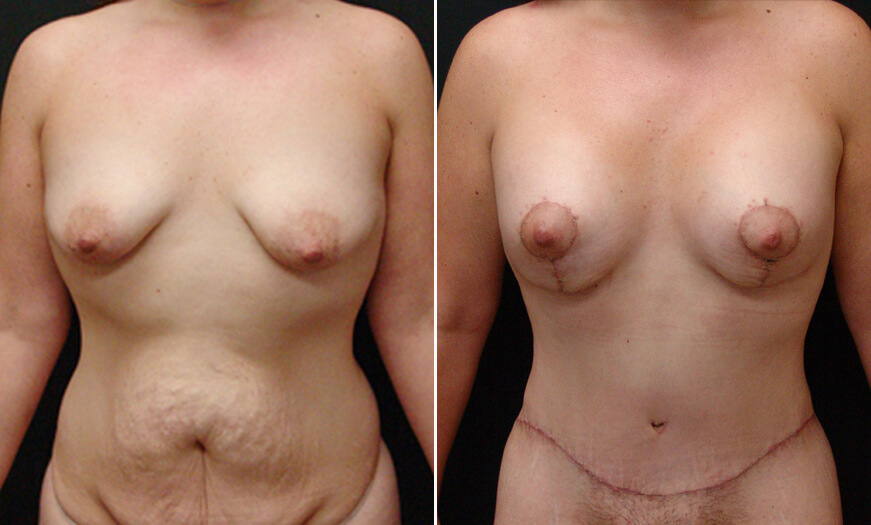

101 OLD SHORT HILLS RD, WEST ORANGE, NJ 07052
973.731.7000
620 PARK AVENUE, NEW YORK, NY 10065
212.938.0158
Breast Lift NJ
Mastopexy
A breast lift can help create youthful-looking breasts by reducing sagging. With age, many women experience breast sagging or drooping. For aging women, the shape of their breasts can drastically change due to factors such as genetics, weight gain, gravity, pregnancy, and nursing. A breast lift can help women achieve youthful-looking, lifted breasts through breast lift surgery.
What Is Breast Lift Surgery?
A breast lift, also known as mastopexy, is a breast enhancement surgery that lifts and shapes breasts that have begun to sag with age. A breast lift surgery can also help reduce the size of the areolas. The nipples and areolas are repositioned during a breast lift to create younger-looking breasts. Mastopexy can be combined with other procedures such as natural breast augmentation or breast enhancement with breast implants for even more pleasing results. A breast lift surgery varies in length depending on technique and individual case, but the majority of breast lifts can be done in 2-3 hours. The 3 main techniques for a breast lift surgery are the anchor breast lift, lollipop breast lift, and doughnut breast lift.
An anchor lift uses an anchor-shaped or inverted t-shaped incision that follows the natural crease of your breast. This incision highlights the areas of the breast where excess skin will be removed. The anchor breast lift technique involves an incision along the border of the areola, a vertical incision to the crease of the breast, and the previously mentioned incision along your natural breast crease. Many plastic surgeons opt for the anchor breast lift because it greatly reduces the sagging of breasts. An anchor breast lift may be better suited for women with smaller breasts.
A lollipop breast lift is commonly referred to as a vertical mastopexy or vertical breast lift. A lollipop breast lift involves an incision around the areola and the nipple itself. An additional incision will be placed vertically down to the base of your breasts. Most patients choose a vertical breast lift if they are looking to treat mild-to-moderate breast sagging.
The doughnut mastopexy is a breast lift technique that removes less excess skin than an anchor breast lift, which results in a much shorter recovery time. Circular or doughnut-shaped incisions will be made around your areola and nipple so that excess tissue from the bottom of the breast may be removed. A doughnut breast lift may not be suited for women with larger breasts.
| Anchor Breast Lift | Lollipop Breast Lift | Doughnut Breast Lift |
|---|---|---|
| An anchor-shaped incision will be placed along the base of your breasts, along with an incision on the border of the areolas and a vertical incision to the natural crease of your breast | Incisions will be placed around the nipples and areolas, as well as vertically down to the base of your breast | Uses circular or doughnut-shaped incisions around the areolas and nipples |
| Reduces moderate-to-severe sagging on the lower half of the breast | Treats moderate breast sagging with less potential for scarring than anchor breast lift | Used in cases of mild-to-moderate breast sagging |
| Provides an overall youthful appearance to the breasts | Greater maneuverability than doughnut breast lift | Excess tissue is removed from the bottom of the breast |
| A longer recovery period due to multiple incisions but provides most noticeable results | A slightly shorter recovery time than anchor breast lift | A shorter recovery time due to less breast tissue being removed and fewer incisions |
What Can I Expect Before My Breast Lift Surgery?
Your breast lift consultation will begin with a breast exam to assess the extent of sagging and to choose which breast lift method is best for your particular case. Dr. Asaadi will also evaluate your general medical health to ensure your wellbeing during your breast enhancement surgery. Certain medications may need to be stopped prior to your breast lift surgery. The ideal breast lift candidates are looking to correct breast sagging and achieve more lifted breasts.
Your breast lift procedure is performed on an outpatient basis, which means that you will be able to return home the same day. It is important that you have a family member or close friend accompany you the day of your breast lift surgery, as you will not be able to drive yourself home following your breast lift procedure. It is also recommended that you have a family member or friend with you for the first 1-2 days after your breast lift surgery while you recover.
What Can I Expect After My Breast Lift Surgery?
After your breast lift surgery, your breasts will be gently bandaged to promote proper healing. You may also be outfitted with a compression bra that will support your breasts during your recovery period. These garments will reduce the movement of your breasts, which will result in increased comfort during healing. A drain may be placed to remove any excess fluid in your breasts, reducing the chance of discomfort or swelling.
Common breast lift side effects include swelling, bruising, and discomfort. A few days after your breast lift procedure, your bandages and support garment will be replaced by a comfortable support bra, which will need to be worn for the following 3-4 weeks. Any stitches will be removed 1-2 weeks after your breast lift surgery.
If the skin around your breasts or nipples is dry following breast lift surgery, a non-scented lotion can be applied to soothe the skin. When applying lotion, it is important to be careful not to irritate your breasts by applying lotion too roughly. You must not apply any lotion to your stitches.
Most patients can return to work 1 week following their mastopexy surgery. You will not be able to bend or lift objects for the first few weeks following your breast lift procedure. Strenuous activity must be stopped until your breasts have adequately healed. Physical exercise and sports must also be stopped for the first 3-4 weeks following your mastopexy procedure.
Incisions are placed as discreetly as possible to reduce the potential of any visible scarring. Incisions may appear uneven or inflamed for weeks or months following your breast lift, but these symptoms will continue to fade. As your breasts heal, incisions will become less and less noticeable.



The Importance Of Choosing A Highly Experienced Breast Lift Surgeon
It is important that you choose a skilled breast lift surgeon who understands your individual anatomy. When the right plastic surgeon performs breast lift surgery, there is usually no need for a revision. Dr. Asaadi stresses the importance of choosing a qualified, experienced, and board-certified plastic surgeon when considering a breast lift procedure.
How Can I Get Started With Breast Lift Surgery?
Dr. Mokhtar Asaadi and our staff will be happy to discuss breast lift surgery with you. Please contact our New Jersey office at 973.731.7000 or our New York office at 212.938.0158 to schedule a private consultation. You may also request an appointment online to meet with our breast lift surgeon.


